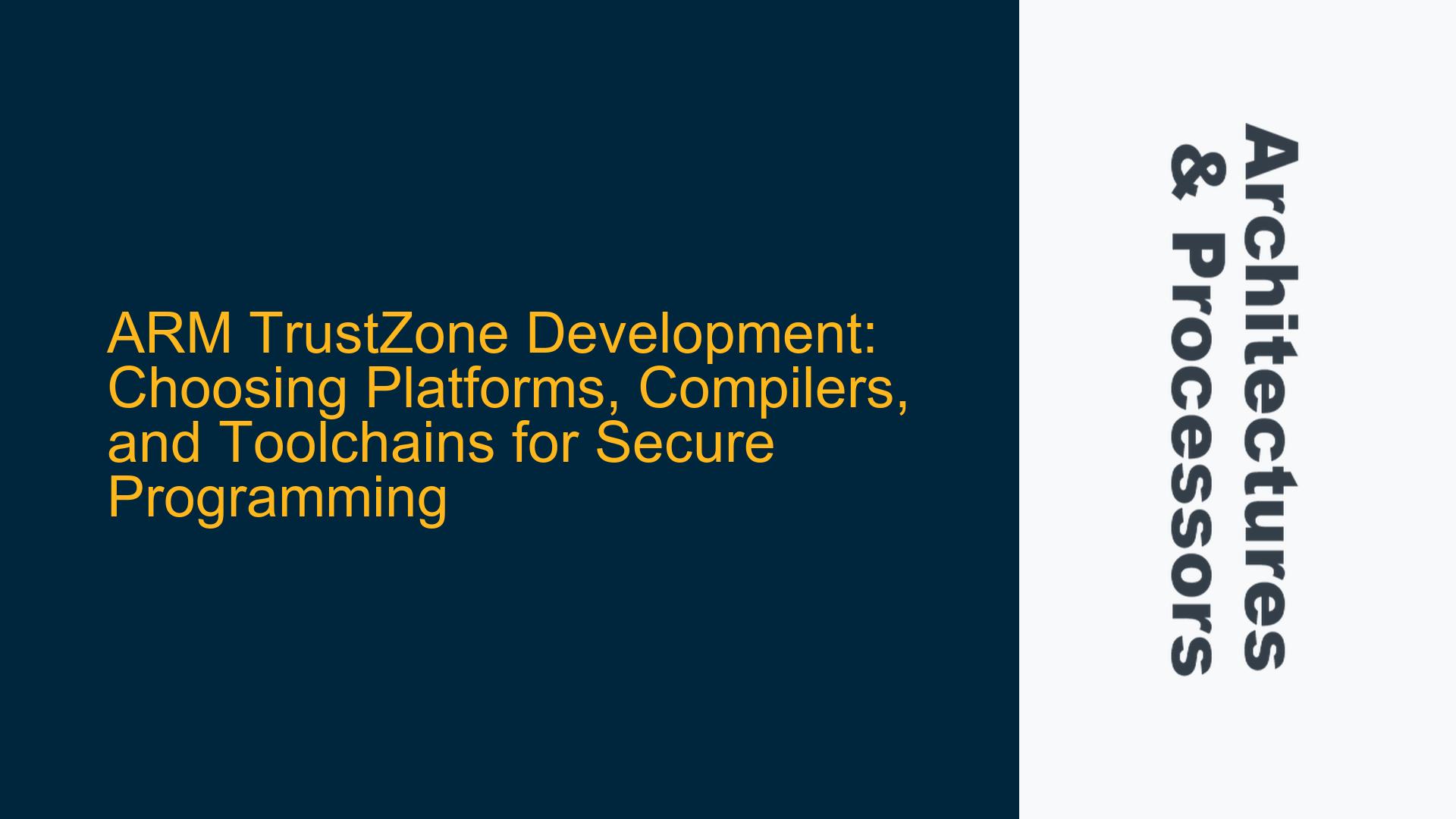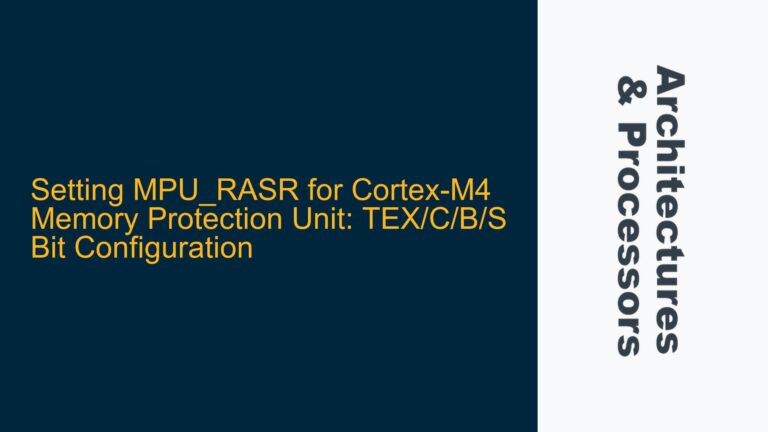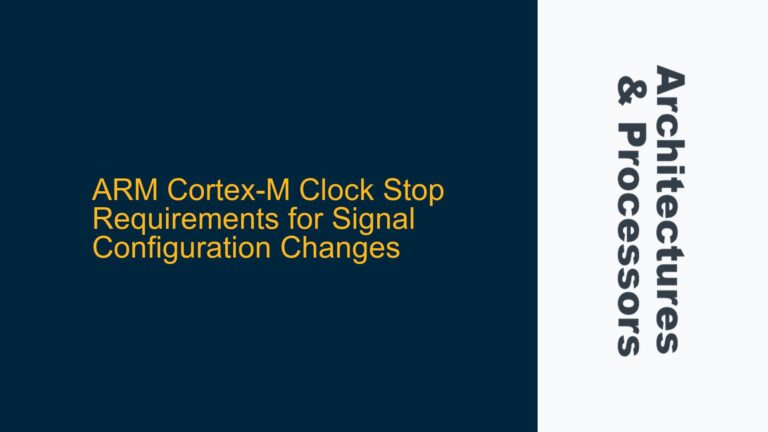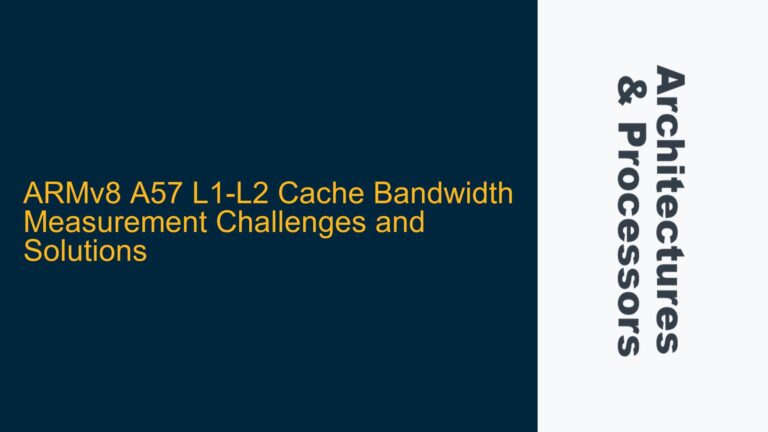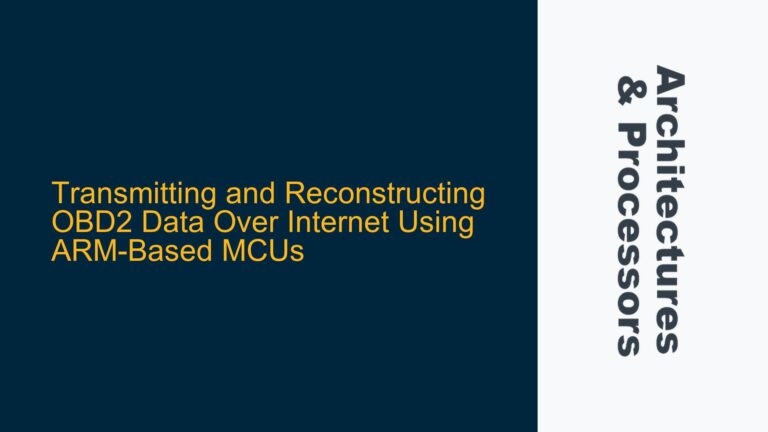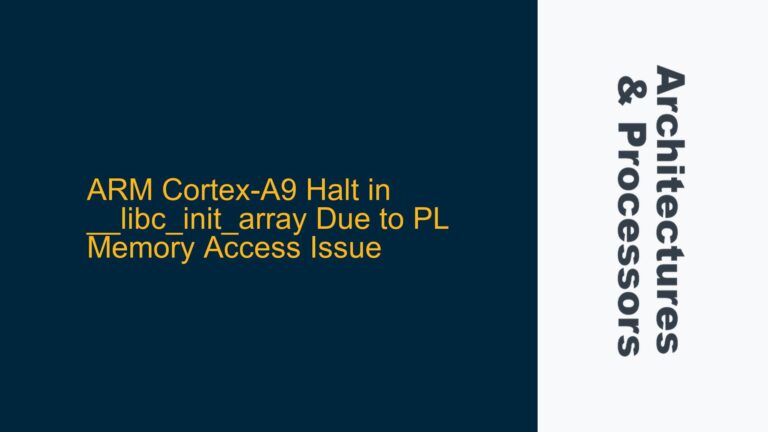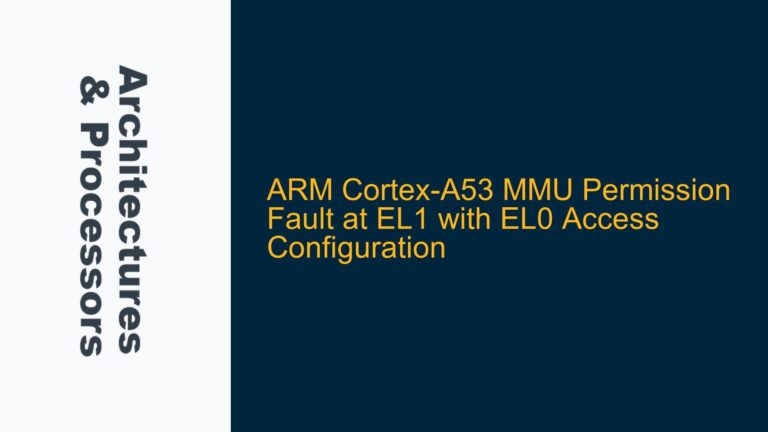Secure Programming Requirements for ARM TrustZone Environments
When developing secure applications for ARM TrustZone, the primary goal is to isolate sensitive code and data within a secure zone while allowing non-secure code to execute in a separate, non-secure zone. This architectural separation is critical for ensuring that sensitive operations, such as cryptographic key management or secure boot processes, are protected from unauthorized access or tampering. The ARM TrustZone technology achieves this by partitioning the system into secure and non-secure worlds, each with its own memory regions, peripherals, and execution states.
To meet the requirements outlined in the discussion, developers must address two key challenges: writing a secure program that leverages TrustZone’s isolation capabilities and instrumenting the compiled binary for debugging or analysis purposes. The secure program must be designed to interact with both secure and non-secure worlds, ensuring that sensitive operations are confined to the secure zone while allowing controlled communication between the two worlds. Code instrumentation, on the other hand, involves modifying the compiled binary to insert debugging hooks, performance monitoring tools, or other analysis mechanisms without compromising the security of the system.
The complexity of TrustZone development arises from the need to carefully manage the interactions between secure and non-secure worlds. For example, secure world code must be designed to handle requests from the non-secure world while ensuring that sensitive data is not leaked. Additionally, developers must consider the implications of TrustZone on system performance, as the overhead of switching between secure and non-secure states can impact real-time performance in embedded systems.
Development Platforms, Compilers, and Toolchains for TrustZone
ARM TrustZone development requires a robust ecosystem of development platforms, compilers, and toolchains that support the unique features of TrustZone-enabled processors. The discussion highlights several options, including ARM Keil MDK, IAR Embedded Workbench, GCC, and Clang. Each of these tools has its own strengths and limitations, and the choice of toolchain depends on the specific requirements of the project.
ARM Keil MDK is a popular choice for TrustZone development due to its tight integration with ARM processors and comprehensive support for TrustZone features. Keil MDK includes the ARM Compiler 6, which is based on the LLVM infrastructure and provides advanced optimizations for ARM architectures. The Keil environment also includes a debugger with TrustZone awareness, allowing developers to inspect and debug both secure and non-secure worlds. Additionally, Keil MDK provides application notes and examples that demonstrate how to implement TrustZone-based security features, such as secure boot and secure firmware updates.
IAR Embedded Workbench is another powerful toolchain for TrustZone development. IAR’s compiler is known for its high optimization levels and support for ARM architectures, including TrustZone-enabled processors like the Cortex-M23 and Cortex-M33. IAR also provides a debugger with TrustZone support, enabling developers to debug secure and non-secure code simultaneously. One of the key advantages of IAR is its focus on code size and performance optimization, making it a good choice for resource-constrained embedded systems.
GCC and Clang are open-source alternatives that offer flexibility and customization options for TrustZone development. GCC has long been a staple in the embedded systems community, and its support for ARM architectures has matured over the years. Clang, which is part of the LLVM project, is gaining popularity due to its modern architecture and support for advanced optimizations. Both GCC and Clang can be used with TrustZone-enabled processors, but they require additional configuration and integration with TrustZone-aware debuggers and development environments.
In addition to compilers, the choice of development platform is critical for TrustZone development. Platforms like ARM Mbed and CMSIS provide software abstraction layers that simplify the development of TrustZone-based applications. ARM Mbed is particularly well-suited for IoT devices, offering a cloud-based development environment and a rich ecosystem of libraries and tools. CMSIS, on the other hand, provides low-level APIs for ARM Cortex-M and Cortex-A processors, including support for TrustZone features. CMSIS-CORE, for example, includes functions for managing secure and non-secure states, while CMSIS-DSP and CMSIS-NN provide optimized libraries for digital signal processing and neural network operations.
Implementing TrustZone Features with RTOS and Hardware Platforms
The integration of TrustZone features with real-time operating systems (RTOS) and hardware platforms is a critical aspect of secure embedded system development. The discussion mentions several RTOS options, including RTX from Keil/Arm, CMSIS RTOS, and FreeRTOS. Each of these RTOS solutions has its own approach to supporting TrustZone, and the choice of RTOS depends on the specific requirements of the project.
RTX from Keil/Arm is a commercial RTOS that provides native support for TrustZone-enabled processors. RTX includes features for managing secure and non-secure tasks, as well as mechanisms for inter-world communication. For example, RTX allows developers to define secure tasks that can only be accessed from the secure world, while non-secure tasks run in the non-secure world. RTX also provides APIs for managing memory protection units (MPUs) and other TrustZone-related features.
CMSIS RTOS is a standardized API for RTOS implementations that supports TrustZone-enabled processors. CMSIS RTOS allows developers to write portable code that can run on different RTOS implementations, including RTX and FreeRTOS. The CMSIS RTOS API includes functions for creating and managing tasks, semaphores, and message queues, as well as support for TrustZone features like secure context switching and inter-world communication.
FreeRTOS is an open-source RTOS that has recently added support for TrustZone-enabled processors. FreeRTOS provides a lightweight and flexible RTOS solution that is well-suited for resource-constrained embedded systems. The TrustZone support in FreeRTOS includes features for managing secure and non-secure tasks, as well as mechanisms for inter-world communication. FreeRTOS also provides a porting layer that allows developers to adapt the RTOS to different hardware platforms and TrustZone implementations.
In terms of hardware platforms, the discussion highlights several TrustZone-enabled MCUs from vendors like Nordic Semiconductor, NXP, ST Microelectronics, and Microchip. These MCUs are based on ARM Cortex-M23 and Cortex-M33 processors, which include TrustZone features for secure embedded systems. For example, the Nordic Semiconductor nRF91 series is designed for IoT applications and includes a Cortex-M33 processor with TrustZone support. The NXP LPC55S6x series is another popular choice for TrustZone development, offering a Cortex-M33 processor with advanced security features like secure boot and secure firmware updates.
When selecting a hardware platform for TrustZone development, developers must consider factors like performance, power consumption, and security features. For example, the ST Microelectronics STM32L55 series is designed for low-power applications and includes a Cortex-M33 processor with TrustZone support. The Microchip SAM L10/L11 series, on the other hand, is optimized for cost-sensitive applications and includes a Cortex-M23 processor with TrustZone features.
In conclusion, developing secure applications for ARM TrustZone requires a comprehensive understanding of the development platforms, compilers, toolchains, RTOS options, and hardware platforms available. By carefully selecting the right tools and platforms, developers can leverage the full potential of TrustZone technology to create secure and reliable embedded systems.
